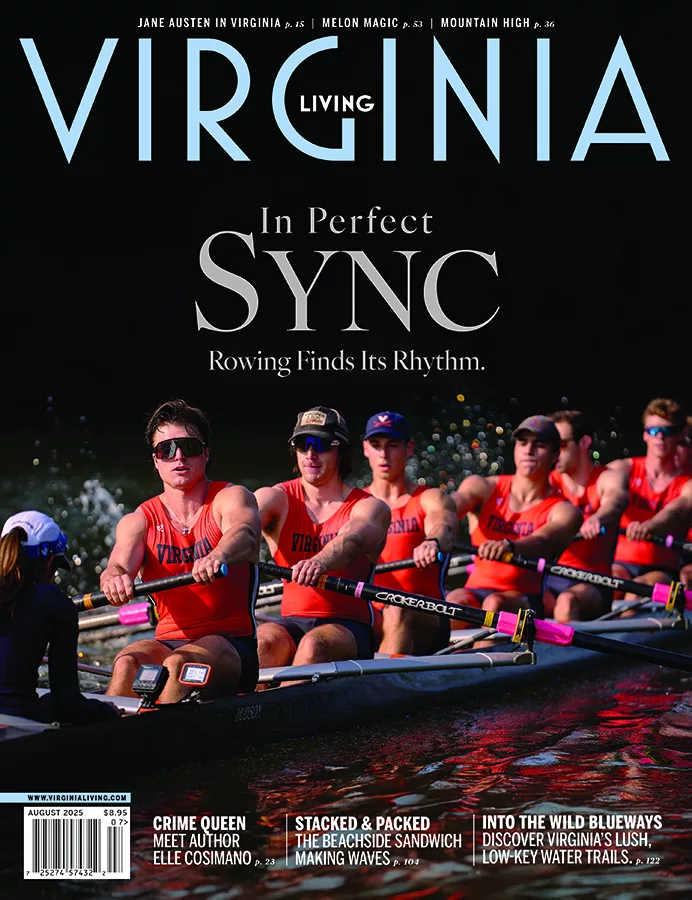In Ruckersville, cars vie for the Academy Award of the automotive industry—”Top Safety Pick.”

The dummy’s position in relation to the door frame, steering wheel, and instrument panel after the crash test indicates that the driver’s survival space was maintained well.
Photo courtesy of the Insurance Institute of Highway Safety
In the small town of Ruckersville, just north of Charlottesville, a nondescript building off Route 29 is the scene of more car accidents than nearly any other spot in the world. Nearly every make and model, from the sleek Maserati to the hard-working Ford F-150, has been crushed, sideswiped, broadsided and subjected to all manner of major mangling here.
But it’s all for a good cause. The organization inhabiting the building is the Insurance Institute of Highway Safety (IIHS), a non-profit that has tested the safety of automobiles since the 1950s. And the 22,000-square-foot crash hall is where the action happens: It is a massive, white windowless room built specifically for capturing pristine television footage with its blockbuster production lighting and cinema quality video lenses. The crashes captured here have been used in hundreds of car commercials, news programs, and even films.
Today, a cherry red 2015 Mini Cooper is being put to the test. As a team of about seven IIHS employees moves in and out of the hall making final preparations, the lights turn on and the capacious room quickly becomes uncomfortably warm. The camera crew double-checks that its equipment is on frame while a group of engineers huddle around the car—primping and adjusting the star of the shoot.
Marcy Edwards, an IIHS research engineer, steps away from the cluster and explains that these are the last stages of preparation for the test. This includes marking the dummy’s head with grease paint so that the team can see where it makes impact during the crash. Crash tests occur about twice a week here; it takes several days to drain fluids and install the measuring instrumentation and camera units necessary to record the crash and its effects. Today, a side impact crash, the most fatal type of crash after front impact, will be simulated.
Once everything is finally ready, everyone in the hall ascends a raised platform as the mobile barrier at the end of the hall begins to thunder its way down the track. There is dead silence otherwise, until the barrier and the vehicle meet in an explosive burst that cracks through the room. The Mini Cooper flies back 30 feet and the once pristine floor is littered with confetti-like bits of blue-green glass.
Afterward, IIHS engineers hurry down and circle around the now crumpled car. Photos and notes are taken. Kinematics on the dummy will also be assessed. “With all the instrumentation, a dummy can cost up to a quarter of a million dollars” says Joe Nolan, chief administrative officer and senior vice president of vehicle research. IIHS has about 20 dummies, representing both female and male passengers of various ages and sizes.
“The idea is to publicize results, and encourage automakers to make changes” explains Russ Rader, senior vice president of communications. “We also provide results to consumers to help with safety decisions.” Their work is paying off: The death rate from car accidents has dropped in the last 50 years, “and a big part of that is because of safer cars,” says Rader.
The IIHS was founded in 1959 in Arlington and the Ruckersville facility was built in 1993, all completely funded by private insurance companies. “Insurance agencies have an interest in reducing the payout they have to make in crashes,” says Rader. “It’s an interesting and rare position in which private insurance interests coincide with the interests of the public.”
A $30 million expansion was completed on the 140-acre site last year that added a 5-acre covered track. It is one of the largest fabric covered structures in the country and is used for crash avoidance and headlight testing. About 80 vehicles are tested annually; the destroyed cars are then displayed in the crash hall, sold for parts or used by emergency responders to practice extrications.
There are five evaluations that IIHS conducts to determine a vehicle’s safety: side impact, small overlap front, moderate overlap front, roof strength and head restraints. Of course, “There’s no requirement to make changes because we’re not a government body. But no manufacturer wants to be on the news for poor ratings,” says Rader. Manufacturers are ultimately competing for the Academy Award of the car world, at least in terms of safety, the title of “Top Safety Pick.” To receive the coveted designation, a vehicle must receive a good rating on all five tests.
Manufacturers weren’t always on board with the IIHS’ work. “When we launched our first test, automakers weren’t receptive,” Rader recalls. “That’s all changed. It used to be religion among automakers that safety doesn’t sell. Now they’re running ads that show how well they do on IIHS tests.”
As a result, vehicles are becoming safer. “It is unusual for a car to receive a poor rating on one of the tests, but that wasn’t the case 10 years ago,” says Rader. “When we first did side impact, we were getting more dummy damage than damage in cars. But we haven’t seen damage like that in years.”
New challenges are continually developing: “We know people want infotainment systems in vehicles. How can we allow them to do that more safely?” asks Rader. “We are continually going back to real-world data to see how people are being injured.” IIHS.org










